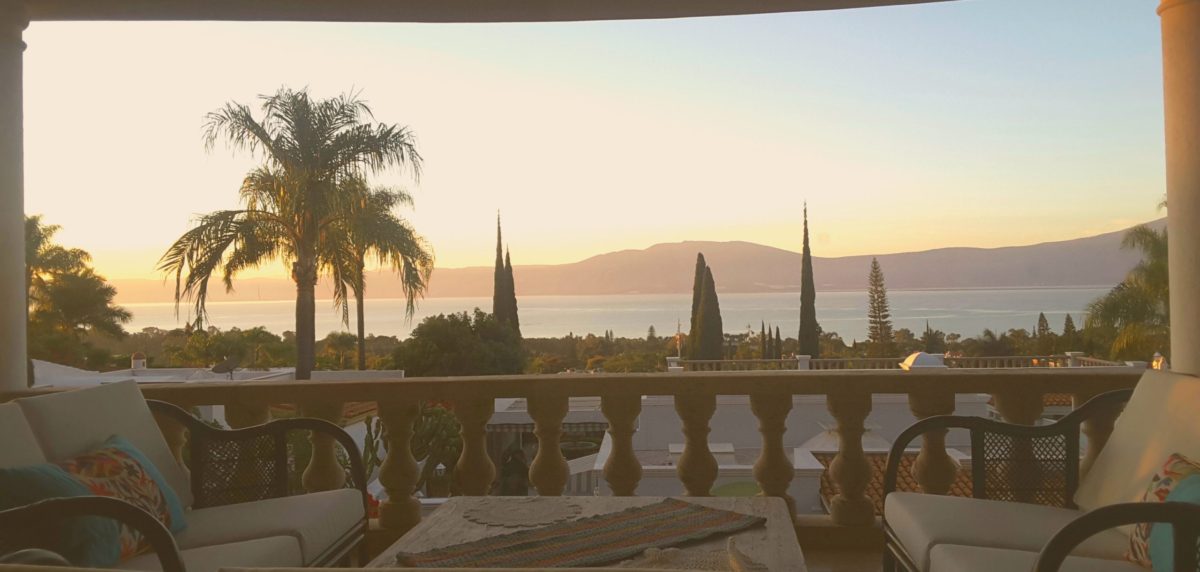Most people have heard of the Valle de Guadalupe, the up-and-coming Mexican region producing some excellent wines. It’s within an hour or so of San Diego, in the otherwise harsh climate of the Baja Peninsula. We visited there and wrote about it here. We just took another local tour, this time visiting the towns of Querétaro, San Miguel de Allende, and Guanajuato, located in the central Mexican Highlands. This was a trip focused on the vinícolas, or vineyards, and we had only passing walking tours of the towns themselves.


In the area around Querétaro (pronounced kay-RET-ahh-ro), we visited Viñedos Azteca and Freixenet. We were struck by how developed the wineries were with respect to tasting and tourism: each had impressive facilities with grand entrances, restaurants and tasting rooms. Clearly they were anticipating a large and growing tourism business, as otherwise the compounds seemed out of place in rural Mexico. Cabernet Sauvignon and Sauvignon Blanc were the primary wines here, but others were also in production, as the region is still in the experimental phase. The wines themselves were a mix: some good, some less so, but the overall experience was pleasant due to the well-organized tours and tastings. We stayed at the Casa de la Marquesa, a history-filled hotel smack in the middle of the old town area. Sadly, we didn’t have much time to explore the history of the town, which was important in both the war of independence and the revolution. Clearly it merits another visit!


Our second stop was in the famous San Miguel de Allende, another expat hot-spot. We certainly experienced the infamous San Miguel effect: walking uphill to arrive at a destination, than returning whence we started and (seemingly) walking uphill again! San Miguel is significantly more populated than the Chapala area where we live, and the town has more of an artsy, haute couture feel. Both Judy and I had the same reaction: the centro is Georgetown (DC types will understand)! The centro area is filled with gringo-friendly (if pricey) shops and restaurants, and is surrounded by large Mexican neighborhoods. We had a spectacular breakfast at a restaurant called Moxi, where the chef is (apparently) of Michelin-star quality. The food certainly was.



Around San Miguel we visited the Dos Buhos, Tres Raices, and San Lucas wineries, with many of the same tastings results: amazing locations, uneven (but overall acceptable) wines. The highlight here was a wine pairing dinner at Los Remedios Hacienda, located in a tiny pueblo (called San Pablo, I believe). Here we had a memorable symphony of good wines, paired with a series of delicious dishes, in an unmatched setting. The vineyard is centered upon a redeveloped 16th century hacienda, wherein some of the original buildings and walls remain. Unforgettable. As for San Miguel? We could see what attracts so many expats, even if it’s not the place for us.


Our final brief stop was Guanajuato, a onetime silver mining town along the Camino Real (royal highway) in Mexico. Built among a series of steep ravines cut by rapid rivers through the rocky countryside, today it’s known for colorful casas, favorite son Diego Rivera (famous 20th Century Mexican muralist) and its university. The town is visually stunning: parts straddle the high ridges, other parts cling to the canyon-sides. Everywhere are well-maintained, colorful houses and buildings. The raging waters that once brought death and destruction have been literally buried, and their former courses replaced with winding roadways! Likewise, old silver mining tunnels now function as roads through the steep hills, complete with pedestrian walkways (but no lighting!). I would caution that although I am comfortable navigating most cities with Google Maps or Waze, Guanajuato was an exception. Many times my apps would tell me I was standing in the middle of a highway, when in fact I was standing 200 feet above a buried one! I would caution against driving in the town, even only to avoid severe parking shortages.

Guanajuato has a real college-town atmosphere, and loads of history. Most striking is the story of El Pipila. Born Juan Amaro in 1783, he had birth defects which gave him a funny stride, and a suitable nickname among his fellow silver miners: el pepila (“the turkey”). At the outbreak of the war for independence, the Spanish leadership in Guanajuato barricaded themselves and their families in the local grain storage site or alhondiga, a large, fortified building which would allow them to hold out until Spanish troops arrived to relieve them. The insurgents could not breech the walls, but El Pipila placed a slab of rock on his back and maneuvered–under fire but protected by the slab–to the main door, which he set on fire. The insurgents surged forward, and proceeded to slaughter everyone inside. When the Spanish crown authorities retook the city and initially crushed the rebellion, they decapitated the four leaders of the insurgency and placed their heads on the four corners of the building! El Pipila became the archetype for the rebellion, which despite so many setbacks, eventually prevailed. El Pipila survived the war and went back to mining silver.
Our time was so very brief here, but the town is enchanting, and well worth spending more time for the history, the culture and the annual Cervantes international celebration.
We had a great time touring the vineyards and walking the towns. The climate was pleasantly moderate, the people friendly (although ingles was only common in San Miguel!), the entire area safe. Best of all, there were many opportunities to see Real Mexico.

Thanks for sharing. I especially liked the photo of La Parroquia de San Miguel Arcangel and the culture you captured in the hillside pic. You mentioned silver mines. My grandfather mined for silver in Mexico before I was born. When I was 12, he took me to visit the Mexican village near the mine. I remember the burros, the pool hall filled with shady characters, and the teenage girls touching my blonde hair.